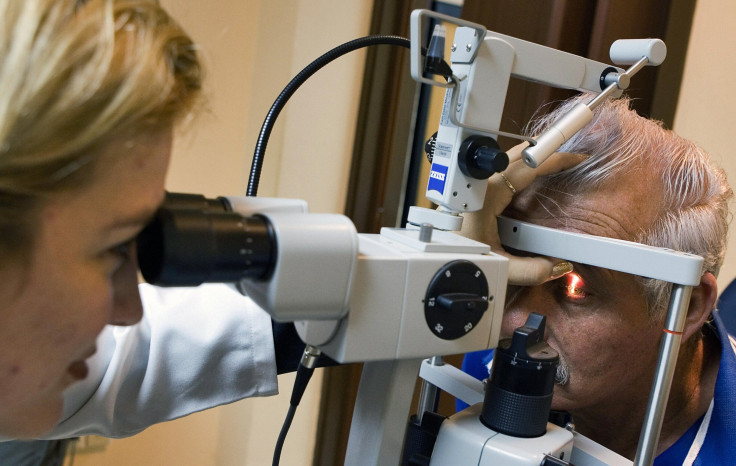Older Americans With Visual Impairment, Blindness Expected To Double By 2050

Most of us have our first eye exam as a small child and pass that test with ease. As we grow older, though, perfect eyesight becomes increasingly rare and more of us require glasses to see. Approaching old age, visual impairment or even blindness becomes a sad reality for many.
Assessing the number of older Americans who experienced vision problems in 2015, a National Eye Institute-funded study calculated 1.02 million people were legally blind and nearly 3.2 million people experienced visual impairment. Blindness is defined by the study authors as vision that is 20/200 or worse, while visual impairment is vision that is worse than 20/40 but better than 20/200. Another 8.2 million older Americans had vision problems due to uncorrected refractive error. By 2050, the researchers say, all these numbers are projected to double.
Visual disability impacts both physical and mental health, note Dr. Rohit Varma, lead author and director of the Roski Eye Institute at University of Southern California, and his co-authors in the introduction to their study. People with visual impairments have a higher risk of accidents, chronic health conditions, withdrawal, and depression. With baby boomers aging, Varma and his colleagues wanted to understand how many Americans will be confronting vision loss. Importantly, their study did not focus on specific causes of visual impairment, including various age-related eye diseases and conditions, the point was to accurately calculate the number of future sufferers.
They began by using census records to estimate population growth rates. Next, they analyzed data on visual impairment and blindness from six large studies spanning five different states representing diverse areas of the country. Finally, they synthesized their various calculations and estimates to project how prevalent vision impairment and blindness is likely to be in 2015 and 2050.
After calculating the number of blind and impaired for 2015, the team forecast impairment will increase by roughly 25 percent per decade while blindness will increase by 21 percent. Based on these calculations, then, the team estimates 6.95 million people will be diagnosed with vision loss and 2.01 million people will be legally blind in 2050. Additionally, for the period spanning 2015 through 2050, Varma and his colleagues project the states with the highest per capita prevalence of visual impairment will be Florida and Hawaii and states with the highest prevalence of blindness will be Mississippi and Louisiana.
Non-Hispanic whites, particularly women, contribute the biggest numbers to both these totals. By 2050, the team expects 2.15 million white women will be visually impaired while 610,000 will be blind; their numbers will nearly double from 2015 rates.
Sometime around the year 2040, Hispanics will make up the second largest piece of the visually impaired pie, says the team. With high rates of diabetes, Hispanics are vulnerable to eye disease, which is treatable in many cases.
African Americans are at high risk for developing glaucoma, the researchers note. Because this potentially blinding eye disease typically causes the loss of peripheral vision, many people who still retain their central vision don’t realize they are losing their eyesight and don’t visit a doctor soon enough.
These numbers are not set in stone, of course, as they are estimates that assume age, sex, and prevalence of visual impairment and blindness will not change dramatically over time. However, based on the data, Varma and his colleagues recommend increased screening and interventions across all populations, though especially among white women.
Source: Varma R, Vajaranant TS, Burkemper B, et al. Visual Impairment and Blindness in Adults in the United States: Demographic and Geographic Variations from 2015 to 2050. JAMA Ophthalmology. 2016.



























